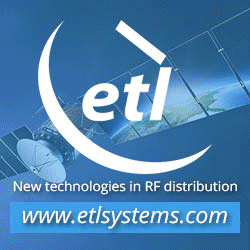StarMesh Global Enters
the LEO Satellite Communications Industry With
Disruptive Patented Technologies
June 02, 2021
Star Mesh, LLC is pleased
to announce the development of pioneering
technical advancements that provide fully secure
and private global satellite communication
networks at a fraction of the cost of current
and under development satellite systems. Design
and engineering breakthroughs enable StarMesh™
satellites to function without the use of rocket
fuel, thrusters, orbital and attitude controls,
or expensive ground station telemetry. StarMesh™
satellites do not require awareness of each
other’s location, attitude, or orbit. StarMesh
Global’s patented technologies will
revolutionize the industry, minimizing many of
the financial risks and dangers of operating in
space.
With the satellite industry
trending towards smaller, compact LEO satellite
designs coupled with decreasing launch costs,
new discoveries have created opportunities for
innovative start-ups to compete. A StarMesh
Global™ constellation uses smart, compact
intelligent satellites in unrestrained orbits
with complex onboard proprietary multi-link
routing and dynamic antenna pairing protocols to
enable instant communications anywhere around
the globe. The patented multi-link routing logic
operates “on the fly,” via real-time
calculations of metrics measured by each node
(e.g., terminals, satellites, drones, etc.) that
becomes part of the route. Thus, data routing is
distributed, rather than centrally controlled,
and the eventual path or route taken to send and
receive data from origination to destination is
not known by anyone or any machine. Full global
infrastructure control and communication
security and privacy can be achieved because
there are no use of third-party software,
routers, switches, gateways, or end terminals.
All vulnerable points of cyber-attack can be
removed.
In a recent interview,
Jerry Schloemer, President and CTO of StarMesh
Global, explained: “We are excited to announce
these new patented satellite communication
discoveries in design, engineering, and
extraordinarily complex mathematics. Our vision
was to cut by 90% the cost to build and launch a
global network capable of nearly instantaneous
worldwide transmissions, and we believe we have
achieved this goal. These cost savings alone
should rattle the industry as most satellite
companies operating today have enormous upfront
sunk costs, making profits hard to come by
during the short life span of LEO satellites.”
Depending on communication
needs, companies or government entities could
own their own private satellite communications
system using only 50 equatorial or 300 inclined
orbiting StarMesh™ satellites. An increase in
the number of satellites reduces overall power
requirements while permitting better antenna
pairing with better signal reception. Potential
applications include private global text, voice
and data networks; land and marine asset
tracking; smart IoT agriculture; real-time
remote monitoring; and local or wide-area
networks. StarMesh™ end terminals (e.g., phones,
sensors, servers, computers, ground stations,
etc.) located at origination and destination
locations communicate directly with a StarMesh
Global™ satellite constellation.
Mr. Schloemer also noted:
“Another StarMesh™ application, made possible
due in part to inherent cost savings, is the
ability to provide a ‘launch on demand’ global
satellite system that could be up and running to
provide global communications faster than any
other satellite system.” Thus, a StarMeshTM
satellite system could provide backup or
redundant worldwide communications in case of an
international emergency or threat.











